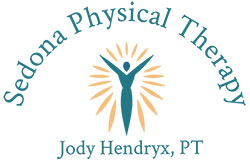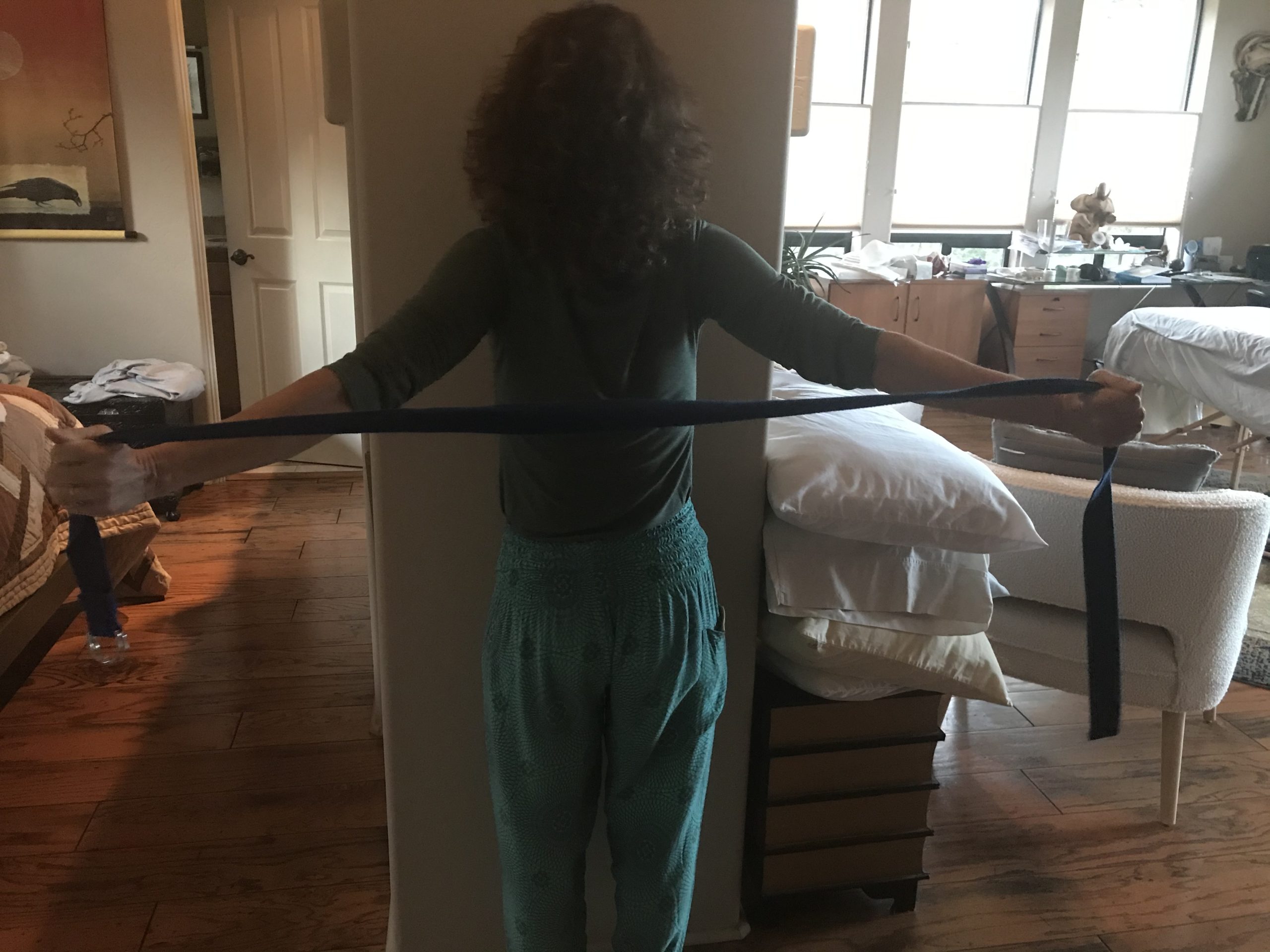The belt stretch is a great self help pain relief for neck and shoulder pain. A typical posture in our modern culture is a forward head, slumped posture. This means that the upper back is rounded and the head is forward with the shoulders rounded forward.
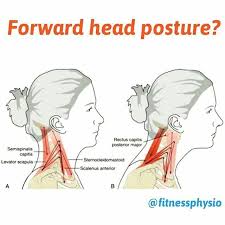
Forward head posture
We’re seeing more and more of this type of posture with the use of tablets and phones for work and recreation. This position of the head actually changes the weight of the head being balanced by the neck and trunk.
Effects of a forward head posture:
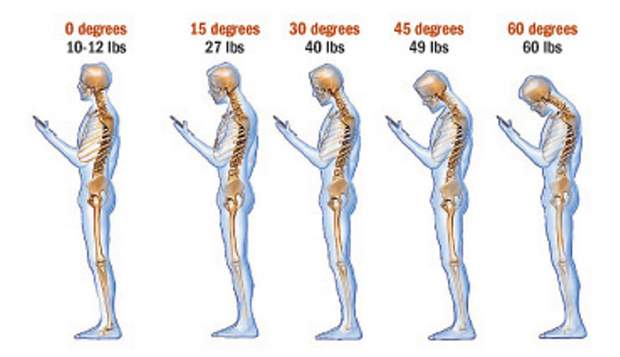
Head weight as a result of forward head posture
There are many consequences to a forward head posture.
- Compresses and flattens the cervical spine
- Compromises blood flow from the head to the neck
- Weakens our muscles on the front of the neck and the upper back
- Affects range of motion of the shoulders- an underlying cause of frozen shoulder or adhesive capsulitis
Neck and shoulder pain is really common and most people don’t realize that the underlying issue causing the pain is what we are doing every day. The forward head posture causes compression of the neck and compromises the action of the rotator cuff muscles which are important muscles for normal shoulder mobility. It also shortens our pectoral muscles and compresses our diaphragm which ultimately affects our breathing.
How can we correct this very common forward head posture?
First and foremost, pay attention to your posture. We spend a lot of time sitting these days. Our work and entertainment tends to be on electronic devices. When sitting at a desk, feet, hips and ankles should be at 90 degrees. The monitor should be at eye level and our forearms should be supported. Avoid using your lap top in bed or slouched on the couch.
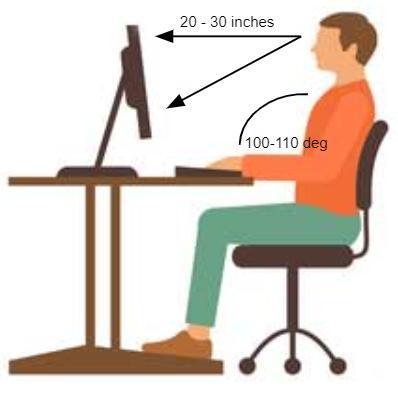
Correct sitting posture
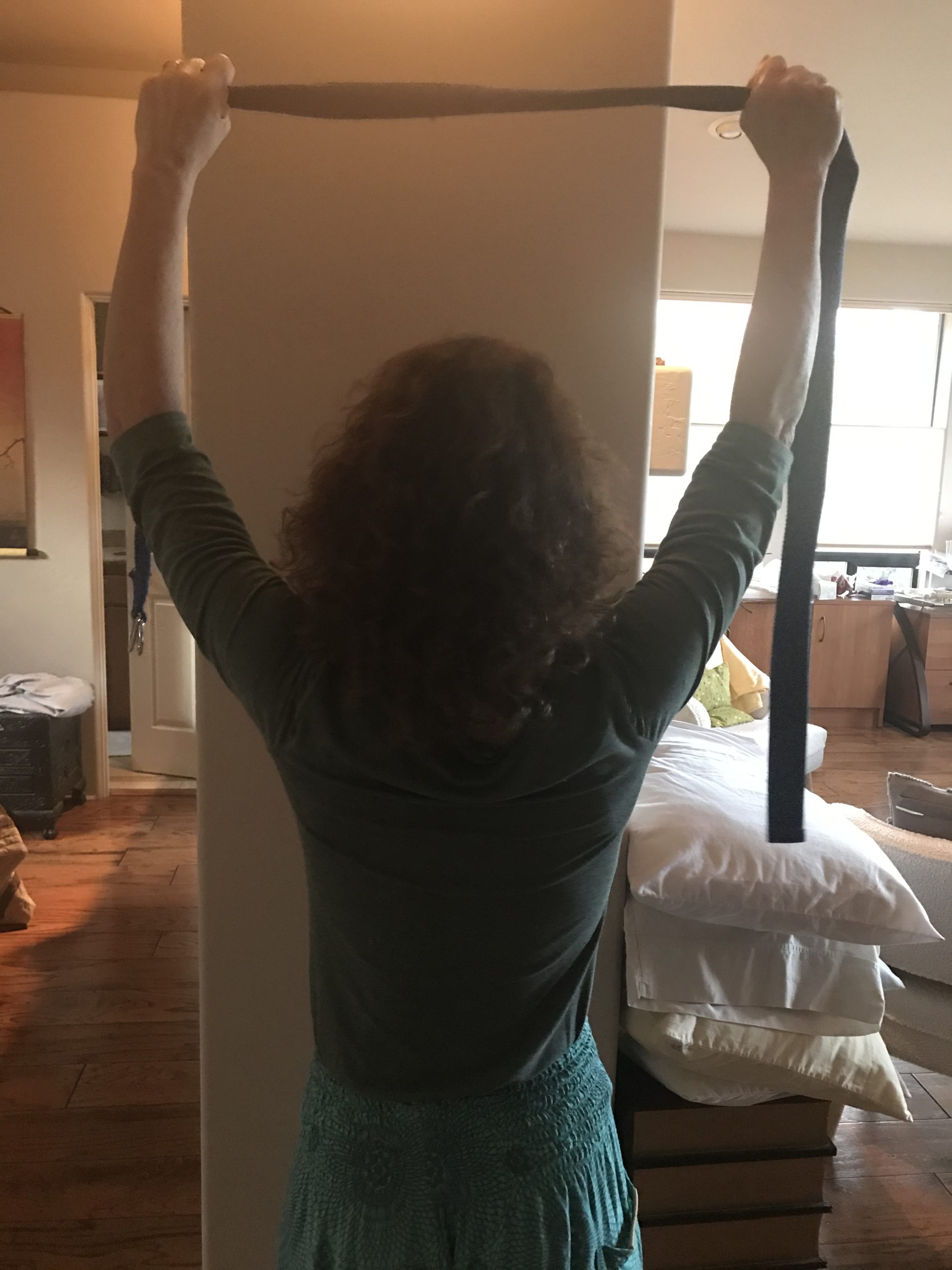
Belt stretch for relief of neck and shoulder pain

Belt stretch routine for neck and shoulder pain relief
Steps for doing the belt stretch:
Use a belt or a strap- 8 feet long is usually adequate.
- Stand erect with good posture holding the belt in your hands resting in front of your body.
- Start to raise your arms up over your head. As you raise your arms up, only go as far as you can go without elevating your shoulders. In other words, as your arms go up, your shoulder blades will slightly drop down your back.
- Do Not: Let your arms bend at the elbows as they raise
Do Not: Let the bottom of your rib cage flare out
- Stop when you are not able to maintain good posture or your shoulders start elevating.
- When the belt reaches the top of your head, you’ll need to let enough slack out of the belt as you start going back behind your head and back.
- Again, only go as far as you can go maintaining good posture.
- If you have full range of motion, you will be able to go all the way behind your back with the belt and then return to the starting position.
The belt stretch is a great tool for maintaining full range of motion of our shoulders, neck and upper back. These areas are prone to compression due to compromised postures which are prevalent in our modern day culture. You may benefit from hands on treatment to open up the front of the chest or neck and back regions if your range of motion is restricted. Myofascial Release is an excellent tool for opening up these restrictions as it engages the fascia and rehydrates the dehydrated, shortened muscles. Restoring the fluidity to the muscles goes down to the cellular level, restoring cellular communication. This is one of the reasons why myofascial release is so effective for therapeutic as well as preventive or wellness treatment.
Jody Hendryx, PT
